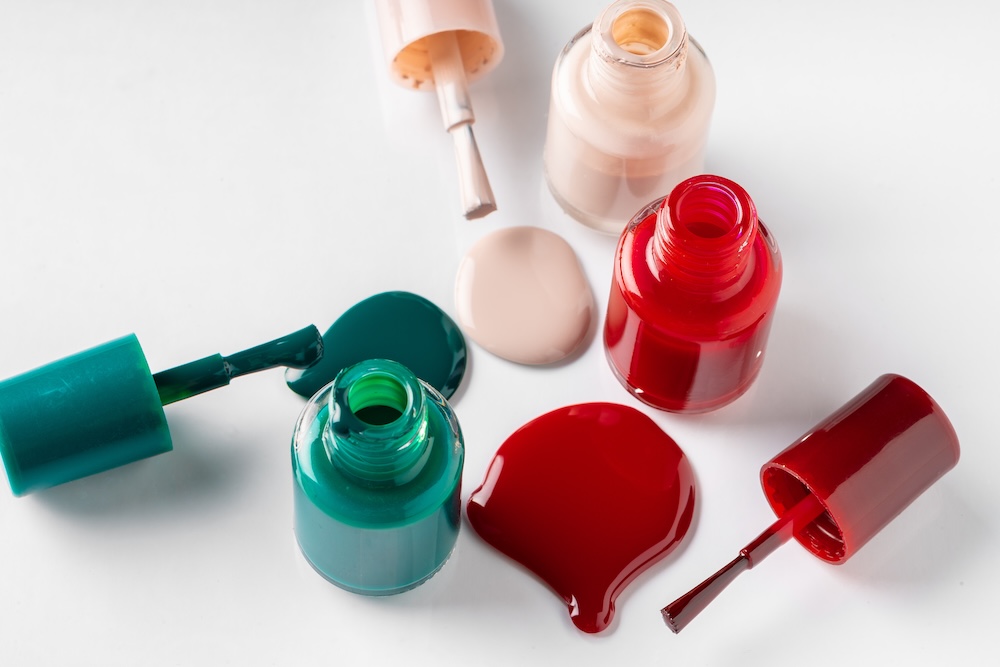Nail polish has long been a staple of the beauty industry, offering endless shades, styles, and self-expression. A fresh manicure can feel empowering — but the traditional formulas behind many nail polishes carry hidden costs. Beyond the colorful finish lies a cocktail of chemicals that may pose risks to human health and contribute to pollution. Add to this the challenges of plastic-heavy packaging and waste disposal, and nail polish becomes more than a personal beauty choice; it’s an environmental issue.
In recent years, a new wave of sustainable and eco-friendly nail polish brands has emerged, offering safer, non-toxic, and planet-conscious alternatives. This shift is part of a growing movement toward green beauty, where personal care aligns with health and environmental responsibility.
Environmental Impact of Traditional Nail Polish
The environmental footprint of nail polish begins before the bottle reaches your vanity. Production typically involves energy-intensive processes and toxic solvents that can contribute to air and water pollution. Once used, leftover polish and remover are classified as hazardous waste, requiring special disposal methods to avoid leaching toxins into the soil and waterways.
Packaging compounds the problem. Most nail polish bottles feature plastic caps and synthetic labels, while glitter polishes often contain microplastics that break down into harmful particles. Plastic packaging can linger for centuries, releasing microplastics and chemicals into the environment long after the manicure fades.
Health Risks of Traditional Nail Polish
Beyond environmental issues, traditional nail polish can have negative health effects. Many formulas contain toxic “big three” or even “toxic ten” chemicals, including:
- Formaldehyde: A known carcinogen linked to respiratory irritation and allergic reactions.
- Toluene: Associated with headaches, dizziness, and long-term neurological effects.
- Dibutyl phthalate (DBP): Linked to hormone disruption and developmental concerns.
While a single manicure may not cause immediate harm, repeated exposure — especially for nail technicians and frequent polish users — can raise health risks. For children and pregnant individuals, the risks may be even greater.
The Rise of Sustainable and Ethical Alternatives
Fortunately, many beauty brands are rethinking nail polish formulas and production methods. Eco-friendly polishes are free from formaldehyde, toluene, and phthalates, with many marketed as “5-free,” “7-free,” or even “10-free.” Instead of petrochemicals, some use plant-based ingredients like corn, sugarcane, or cassava-derived solvents.
Other sustainable shifts include:
- Ethical sourcing of ingredients, prioritizing organic and fair trade.
- Biodegradable packaging, such as compostable labels or refillable bottles.
- Cruelty-free and vegan formulas, certified by organizations like Leaping Bunny or Vegan Society.
- Water-based polishes, which are gentler on nails and emit fewer volatile organic compounds (VOCs).
Some brands, like Zoya, Aila, and Tenoverten, have built reputations as leaders in sustainable nail care. Others are experimenting with innovative refill systems and compostable nail wraps that reduce single-use waste.
Choosing Sustainable Nail Polish
Making the switch to eco-friendly nail care doesn’t mean sacrificing style. With a bit of research and intention, it’s possible to enjoy beautiful nails while minimizing harm to health and the environment.
Here are practical tips to guide your choices:
- Research brands that prioritize non-toxic, plant-based formulas and eco-friendly packaging.
- Look for certifications like cruelty-free, vegan, or FSC-certified packaging.
- Check labels to avoid formaldehyde, toluene, DBP, camphor, and parabens.
- Swap instead of buy: Trade shades with friends or participate in local accessory and polish swaps to reduce waste.
- Choose refillable options where available, or support brands experimenting with return-and-refill models.
Beyond Polish: Rethinking Nail Care Sustainably
Sustainability in nail care isn’t just about polish choice; it’s also about habits and routines. Some additional approaches include:
- Natural nail care: Strengthen and grow your nails with nourishing oils like jojoba or almond instead of synthetic hardeners.
- Biodegradable tools: Switch to glass nail files, bamboo cuticle sticks, and stainless-steel buffers that last longer than plastic tools.
- Eco-conscious removers: Avoid acetone-heavy removers that damage nails and pollute water. Instead, try soy-based or biodegradable options.
- Circular beauty practices: Return empty bottles through recycling programs or specialized beauty take-back schemes.
Final Thoughts
Traditional nail polish may seem like a small indulgence, but its health and environmental costs are far from trivial. The good news is that sustainable alternatives are becoming more widely available, allowing beauty lovers to align self-expression with eco-conscious values. By choosing non-toxic polishes, supporting eco-friendly brands, and adopting mindful nail care practices, you can enjoy vibrant, creative manicures without compromising your health or the planet.
The next time you reach for a new shade, consider more than just the color. Ask whether the product supports your long-term health and contributes to a more sustainable future. Small beauty choices, multiplied across millions of consumers, have the power to reshape industries. With every eco-friendly manicure, you’re not just painting your nails — you’re painting a brighter path for the planet.









Reader Interactions